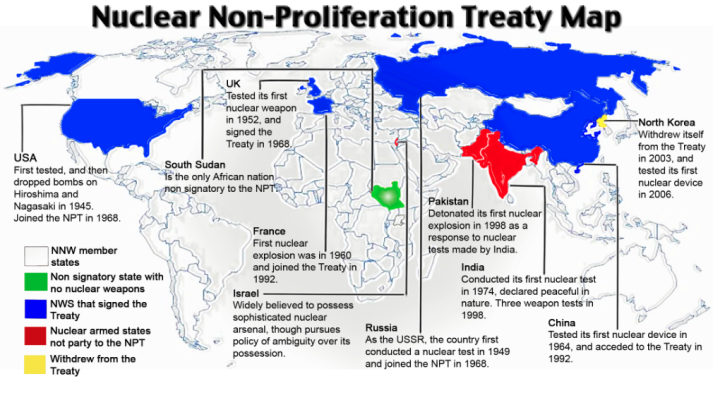By John Loretz, International Physicians for the Prevention of Nuclear War.
When this NPT Review Conference began, I wrote that the outcome would depend on how seriously the humanitarian impacts initiative and the Austrian Pledge were taken up by the member states as a basis for new and effective action on disarmament. Halfway through the month-long conference, the disappointing answer is taking shape.
At the end of last week, the chairs of Main Committee 1 (MC1) and Subsidiary Body 1 (SB1) [both dealing with disarmament issues] released drafts of two substantive reports meant to contribute to the content of a final outcome document. Neither draft adequately came to terms with the unfulfilled 2010 action plan (MC1 blandly notes “the slow pace of the implementation of disarmament commitments”), or made convincing recommendations for what to do next.
On the other hand, both texts asserted that nuclear disarmament has not gone far enough or fast enough since 2010, and highlighted the evidence about the humanitarian impact of nuclear weapons presented at the three HINW conferences. MC1 took note of the Austrian Pledge, but did not make specific reference to the legal gap or to the ban treaty as a means to bridge that gap.
SB1 said explicitly that “awareness of the catastrophic humanitarian consequences of any use of nuclear weapons should serve as a unifying factor and compel urgent action for the full implementation of article VI.” SB1 also mentioned, but did not recommend, the option of “a stand-alone instrument, which could take the form of a nuclear-weapons-ban treaty or a comprehensive nuclear weapons convention” as one means to create a new legal framework for implementing Article VI.
There’s not much point in arguing about whether these drafts are strong enough in their call for legal frameworks and timelines, because even language this resolutely modest will never find its way into a consensus document. The P5 and the weasel states wasted no time in rejecting the drafts and demanding the removal of “unacceptable” language—by which they mean all references to the legal gap, the Austrian Pledge, and the loathsome ban treaty—from the next draft. Some reference to humanitarian consequences might be acceptable, but only in the introductory section, and only if it is divorced from any policy implications.
France had the gall to take the floor yesterday and claim that there was no new evidence about the humanitarian impacts of nuclear weapons, and that fretting over what had been known for decades was a useless distraction. Perhaps if France had attended even one of the three HINW conferences, it might have saved itself from such an ignorant gaffe. (Or not, given a French perspective that’s…umm…special.)
Not to be completely outdone in the self-inflicted-wound department, the US argued that there is no legal gap in the NPT, but that “nothing in Article VI requires time frames or specific requirements for achieving the final elimination of nuclear weapons.” Am I missing some subtle distinction between a gap and a loophole here?
This NPT Review Conference is on a path to irrelevance, if not outright failure. The overwhelming majority of member states (160) find the evidence from the HINW conferences—including the new evidence about nuclear famine, the impossibility of mounting a medical and humanitarian response to the use of nuclear weapons, and the increasing risk that they will be used—alarming enough to warrant putting nuclear disarmament on a very fast track. A significant subset (84 and climbing) have committed themselves to the Austrian Pledge and are ready to fill the vacuum in leadership.
But the P5 and the small minority of states that have thrown the dice on nuclear deterrence are having none of it. They have said, in effect, that nuclear disarmament as more than a catchphrase is an unacceptable outcome of this Review Conference and that there will be no consensus to the contrary. If they can’t charm the other member states into another five-year sleepwalk, they will apparently settle for spending the next five years adding new entries to their glossary of nuclear terms while modernizing their Article VI-compliant arsenals.
The MC1 draft had at least one other good line that will never make the cut: “The Conference emphasizes that the indefinite extension of the Treaty at the 1995 Review and Extension Conference did not imply the indefinite possession of nuclear weapons.”
Which raises the unavoidable question—another 20 years down the road to nowhere—that will come out of an NPT Review that has nothing to say for itself: What are the 84 Pledge states and the 76 others who have aligned themselves with the humanitarian impact movement, but have not yet joined the Pledge, going to do starting on May 23? If the unacceptable behavior of the nuclear-armed states persuades enough others to set a date and a place to convene negotiations on a treaty banning nuclear weapons, this Review Conference might be a success after all.






